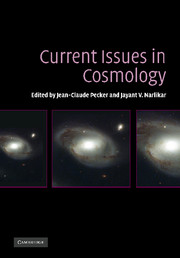Book contents
- Frontmatter
- Contents
- List of contributors
- Preface
- Part I Observational facts relating to discrete sources
- Part II Observational facts relating to background radiation
- Part III Standard cosmology
- Part IV Large-scale structure
- Part V Alternative cosmologies
- Part VI Evidence for anomalous redshifts
- 15 Anomalous redshifts
- 16 Redshifts of galaxies and QSOs: The problem of redshift periodicities
- 17 Statistics of redshift periodicities
- 18 Local abnormal redshifts
- 19 Gravitational lensing and anomalous redshifts
- Part VII Panel discussion
- Index
16 - Redshifts of galaxies and QSOs: The problem of redshift periodicities
Published online by Cambridge University Press: 15 December 2009
- Frontmatter
- Contents
- List of contributors
- Preface
- Part I Observational facts relating to discrete sources
- Part II Observational facts relating to background radiation
- Part III Standard cosmology
- Part IV Large-scale structure
- Part V Alternative cosmologies
- Part VI Evidence for anomalous redshifts
- 15 Anomalous redshifts
- 16 Redshifts of galaxies and QSOs: The problem of redshift periodicities
- 17 Statistics of redshift periodicities
- 18 Local abnormal redshifts
- 19 Gravitational lensing and anomalous redshifts
- Part VII Panel discussion
- Index
Summary
The redshifts of normal galaxies
For more than 70 years observational evidence has been steadily accumulated that shows that the original observations of Hubble, which led directly to the view that the Universe is expanding, apply to normal galaxies made up of stars. Hubble's original redshift-apparent magnitude relation of 1929 was steadily extended to fainter galaxies, so that by the 1950s it covered a range from about cz≃ 1000 km s−1 to values of z close to 0.2 (Humason, Mayall, and Sandage 1956). By about 1960, following the discovery of the radio galaxies, Minkowski (1960) had reached a redshift record with the galaxy associated with 3C 295, which has z= 0.46. In the 1960s it was very difficult to go beyond that. The limits were set by sizes of the telescopes, the efficiency of the detectors, the faintness of the galaxies, and ways of finding suitable distant clusters. These barriers were all eventually overcome, and for galaxies we can now confidently extend the Hubble law out to galaxies with z≃3.
However, while this redshift-apparent magnitude relation taken in the large is apparently a smooth function of z, Tifft showed in the early 1960s, first by studying the redshifts in the Coma cluster of galaxies, that the differential redshifts z among the different galaxies in a cluster appeared to be quantized, so that the redshift differences are of the form nΔz, with cΔz, ≃72 kms−1 and n is an integer.
- Type
- Chapter
- Information
- Current Issues in Cosmology , pp. 197 - 206Publisher: Cambridge University PressPrint publication year: 2006



